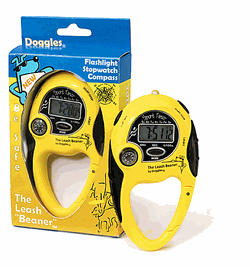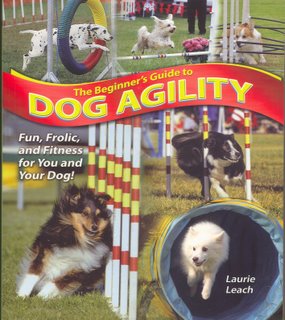In an article in the Canine Chronicle, Chris Robinson asks "Are you suited for field work?" commenting on the experiences in store for those who, after a few years of conformation, turn to field work with their hunting or herding dog. I quote a short excerpt:
Another herder I know had the misfortune of running her dog on a clear, crisp morning when the dog was more than a little fresh. In fact, "wired" would probably be a better description. After starting the outrun barely under control, her dog in a fit of total joie de vivre burst through the herd of sheep which, in turn, set up a wild run. Delighted at the opportunity, the dog tore after the sheep and turned them right back at her handler with the sheep on a dead run. The handler disappeared under a sea of sheep which meant the dog could no longer see the human she was fetching the sheep to. So, she proceeded to circle at top speed tightening the sheep over the prone body of her handler. Making the incident that much more humiliating, friends, and in this case that word should be used advisedly, videotaped the entire show. On the video, every now and then a hand appears from the depth of the sheep whirlpool and faint cries of "lie down," fortunately without the expletives, can be heard on the audio portion of the tape. The handler says she never did get all the stains out of her clothing and the black-and-blue marks on her body, all in the shape of a sheep hoof-print, were quite spectacular for days after the event.
July 22, 2006
July 19, 2006
July 14, 2006
July 13, 2006
Camping
We've spent a couple of weekends recently camping in some fairly crisp temperatures. The dogs have doonas which I form into nests and they wear coats to bed - in my tent one on each side of me - so I think they are warm enough. But I've been looking online for adventure-dog gear.
 The camo sleeping-bag is available from ForDogs They also have dog tents and folding food tables.
The camo sleeping-bag is available from ForDogs They also have dog tents and folding food tables.
 For the serious dog hiker Tails by the Bay have the Leash Beaner, a carabiner clip-on for your leash that has a built in compass, stop watch, watch, and mini flashlight.
For the serious dog hiker Tails by the Bay have the Leash Beaner, a carabiner clip-on for your leash that has a built in compass, stop watch, watch, and mini flashlight.
Other suppliers:
 The camo sleeping-bag is available from ForDogs They also have dog tents and folding food tables.
The camo sleeping-bag is available from ForDogs They also have dog tents and folding food tables. For the serious dog hiker Tails by the Bay have the Leash Beaner, a carabiner clip-on for your leash that has a built in compass, stop watch, watch, and mini flashlight.
For the serious dog hiker Tails by the Bay have the Leash Beaner, a carabiner clip-on for your leash that has a built in compass, stop watch, watch, and mini flashlight.Other suppliers:
July 12, 2006
This girl ...
... is a Woman Now.
At 15 months Dusty begins her first 'season'.
Stages of the Estrous Cycle
At 15 months Dusty begins her first 'season'.
Stages of the Estrous Cycle
- Proestrus: Vulvar swelling and bloody vaginal discharge marks the beginning of proestrus.The first day of bleeding is called the first day of heat. The duration of proestrus can vary from as little as 1 day to 21 days. Proestrus is a time of rising estrogen levels preparing the reproductive tract for breeding.
- Estrus: Is the period of receptivity. Behaviorally it begins the first day the bitch stands. Hormonally it begins on the day of the LH (LueteinizingHormone) surge and is marked by rising progesterone levels and decreasing estrogen levels.
- Diestrus: Normally begins 7 to 9 days post the actual LH surge. Progesterone levels continue to rise and the vaginal cytology cornification abruptly declines. The diestrus period lasts until the bitch whelps or the serum progesterone returns to a basal level.
- Anestrus: Is the period of time between the end of diestrus and the next proestrus period.
The season can last anywhere from 5 days to 3 weeks. I'm hoping for 5 days.
June 28, 2006
Body Language
In The Beginner's Guide to Dog Agility: Fun, Frolic, and Fitness for You and Your Dog! Laurie Leach gives a summary of the body language used to communicate information in agility:
Eyes - Your dog is aware of where you are looking, look at the obstacle you want him to perform next.
Shoulders - They are a powerful communication tool. A turn of the shoulders indicates a change of direction, and the degree of rotation tells how sharp the turn will be. A drop of one shoulder is a cue that the handler is going to rear cross, or cross behind the dog.
Arms - There are three basic ways to use your arms, all arm signals are given with the arm closest to the dog. Bowling the dog is where, palm up, you swing the arm towards the next obstacle. Drawing a path is where you point with one finger moving your arm to show the dog the correct path to the next obstacle, so your arm is close to your body if your dog is to stay close to you, and your arm is outstretched if your dog is to stay further away. Pushing is using an open palm and a push motion to widen the dog's path away from you.
Feet - Dogs, particularly small dogs, learn to read your feet like the arrow on a compass. Your feet should face the next obstacle as soon as possible.
Position - Your position in relation to the dog also tells it where it is to go on course. Lead outs and front and rear crosses give precise information about where the dog is to go next.
Eyes - Your dog is aware of where you are looking, look at the obstacle you want him to perform next.
Shoulders - They are a powerful communication tool. A turn of the shoulders indicates a change of direction, and the degree of rotation tells how sharp the turn will be. A drop of one shoulder is a cue that the handler is going to rear cross, or cross behind the dog.
Arms - There are three basic ways to use your arms, all arm signals are given with the arm closest to the dog. Bowling the dog is where, palm up, you swing the arm towards the next obstacle. Drawing a path is where you point with one finger moving your arm to show the dog the correct path to the next obstacle, so your arm is close to your body if your dog is to stay close to you, and your arm is outstretched if your dog is to stay further away. Pushing is using an open palm and a push motion to widen the dog's path away from you.
Feet - Dogs, particularly small dogs, learn to read your feet like the arrow on a compass. Your feet should face the next obstacle as soon as possible.
Position - Your position in relation to the dog also tells it where it is to go on course. Lead outs and front and rear crosses give precise information about where the dog is to go next.
June 26, 2006
Starters Agility

At an ADAA training camp on the weekend Dusty ran her first full length course. She wasn't really up to this step, but handled it well apart from a tendency to run over to me after every few obstacles. She had lovely contacts, dropping and waiting for the release, and quick responses to the front crosses and post turn. We haven't started training the weaves so I called her past them to the tunnel.
Subscribe to:
Posts (Atom)

